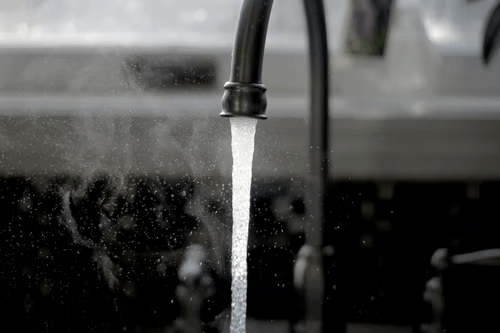You may hear some riders add some water to their motorbike to add some life. Now the question arises, can you add water to a motorcycle battery? Here’s the answer.
You can add water to your motorcycle battery. Still, you should only add pure water because it doesn’t contain any minerals, which don’t cause any pores blockage of motorbike batteries. In easier words, you can add water to a motorcycle battery and should avoid using tap water.
Let’s look at what it means and what you can do about it.
While writing this post, I leave no stone unturned so you can know everything about adding water to motorbike batteries.
Table of Contents
Can You Add Water to a Motorcycle Battery?
Experts always recommend adding water to motorcycle batteries; now the question arises, can you add water to a motorcycle battery?
According to industry experts, you can add pure water to your motorbike batteries.
Adding tap water to the battery can block the battery plate’s pores, decreasing the battery lifespan.
In the next section, let’s look at why you shouldn’t add tap water to motorbike batteries.
Why Shouldn’t You Add Tap water to a Motorcycle Battery?
So far, you understand that you shouldn’t add water to the motorcycle battery. Now the question arises, why shouldn’t you add water to a motorcycle battery?
According to industry experts, you shouldn’t add tap water to the motorcycle battery because tap water contains minerals like Calcium and Magnesium.
These minerals in tap water blocked pores on motorbike battery plates making the batter work hard and increasing the temperature.
Another reason why experts don’t recommend adding tap water to the battery is because it can cause corrosion in motorbike battery plates which makes your battery malfunction.
When to Add Water to a Motorcycle Battery?
So far, you understand why you should avoid adding tap water to your motorbike battery. Now the question arises when to add water to a motorcycle battery?
According to industry experts, adding water to motorbike batteries depends on your battery health, internal temperature, outer temperature usage, and the distance you ride your motorbike.
For instance, if your motorbike’s internal temperature and outer temperature (weather temperature) are relatively high, you may add water to the battery more frequently.
Also, if your motorbike battery usage is high, you may add water to your motorbike more frequently.
The best way to predict whether your motorbike battery requires water is to check the efficiency of the motorbike battery or check the motorbike manually.
Things to Consider When Adding Water to a Motorcycle Battery?
Although there are tons of things, you need to remember and consider when adding water to the motorbike battery. But taking precautions when adding water is the most prominent one.
Don’t forget to wear safety glasses and gloves when adding water to the battery.
You should also check whether your motorbike batteries are maintenance-free or require maintenance, including adding water.
Some batteries don’t require any maintenance, including adding water to your motorbike battery; they are also called plug-and-play motorbike batteries.
The most important thing you should consider is never to place your motorbike battery near a fire, as games released from a battery can be highly flammable.
You should also add water to the motorbike battery in a well-ventilated place.
What if You Overfill Your Motorbike Battery?
So far, you understand some things which you need to consider most when adding water to your motorbike battery and why you shouldn’t add water to the battery.
Now the question arises, what if you overfill your motorbike battery?
According to industry experts, overfilling motorbike batteries with water will decrease the electrolyte concentration in the battery, which will hinder charge transfer.
In simple words, your motorbike battery will start to malfunction.
Another reason why experts don’t recommend overfilling your motorbike battery with water is because when charging your motorbike, the electrolyte is likely to expand, causing leakage.
Overall, you shouldn’t fill water above the given mark on your battery.
Can You Fill Rainwater in the Motorbike Battery?
So far, you understand what type of water you should add to the motorbike battery. Now the question arises, can you fill rainwater in the motorbike battery?
According to various experts, the rainwater is now full of acidic pollutants and spores because of global warming and pollution, which can permanently malfunction your motorbike battery. And it can be worse if you’re living in a polluted city.
While some experts claim that after 20 minutes of raking, the water usually doesn’t have any significant pollutants in it, and you can use it for adding in the battery.
Practically, you don’t know what is in rainwater, and it would be best if you avoid rainwater to add in the motorbike battery.
When to Add Water in a Motorbike Battery?
So far, you understand whether you can fill your motorbike battery with rainwater or not. Now the question arises, should you add water to a motorbike battery after or before charging?
According to industry experts, you should add water to the motorbike battery because adding water before charging can spill the water out.
It’s mainly because charging causes heating which can boil the water and spill it out, and that’s why it would be best to add water after charging.
However, before charging the motorbike battery, you should also pay attention that all lead plates are finely immersed in water to promote better charging.
How Long Would It Take to Charge the Battery On a Motorbike?
Generally, the motorcycle battery charges best at 13.5-14.5 V. You need to ride your motorcycle for at least 3 hours to charge the battery completely.
As mentioned above, the stator converts mechanical energy to electrical energy. And in this sense, the charging capacity will increase as you increase the motorbike speed.
You can further decrease the charging time by switching off the additional accessories you installed on your motorbike. Additionally, the smaller the battery size, the faster it would charge.
Also, rad my previous post where I discussed how you can recharge your motorbike battery, CLICK HERE to read.
Frequently Asked Questions:
Why shouldn’t you add tap water in your motorbike battery?
According to industry experts, you shouldn’t add tap water to the motorcycle battery because tap water contains minerals like Calcium and Magnesium.
When to add water in the motorcycle battery?
According to industry experts, adding water to motorbike batteries depends on your battery health, internal temperature, outer temperature, usage, and the distance you ride your motorbike.
What is the most crucial thing you need to do when filling the motorbike battery with water?
Don’t forget to wear safety glasses and gloves when adding water to the battery, you should also check whether your motorbike batteries are maintenance-free or require maintenance, including adding water.
What if you overfill your motorbike battery?
According to industry experts, overfilling motorbike batteries with water will decrease the electrolyte concentration in the battery, which will hinder charge transfer.
Can you fill rain water in the motorcycle battery?
According to various experts, the rainwater is now full of acidic pollutants and spores because of global warming and pollution, which can permanently malfunction your motorbike battery. And it can be worse if you’re living in a polluted city.
Final Verdict:
Can you add water to a motorcycle battery? You can add water to your motorcycle battery. Still, you should only add pure water because it doesn’t contain any minerals, which doesn’t cause any pores blockage of motorbike batteries.
In easier words, you can add water to a motorcycle battery and should avoid using tap water.
I’ve also mentioned some points you need to consider most when adding water to your motorbike battery and why you should avoid using tap water for motorbike batteries.
John, this side! My passion for motorbikes started when I was 12. I experienced many accidents and even lost some friends too. And it inspired me to create this website so that no parents in this world would lose their child while enjoying riding.


